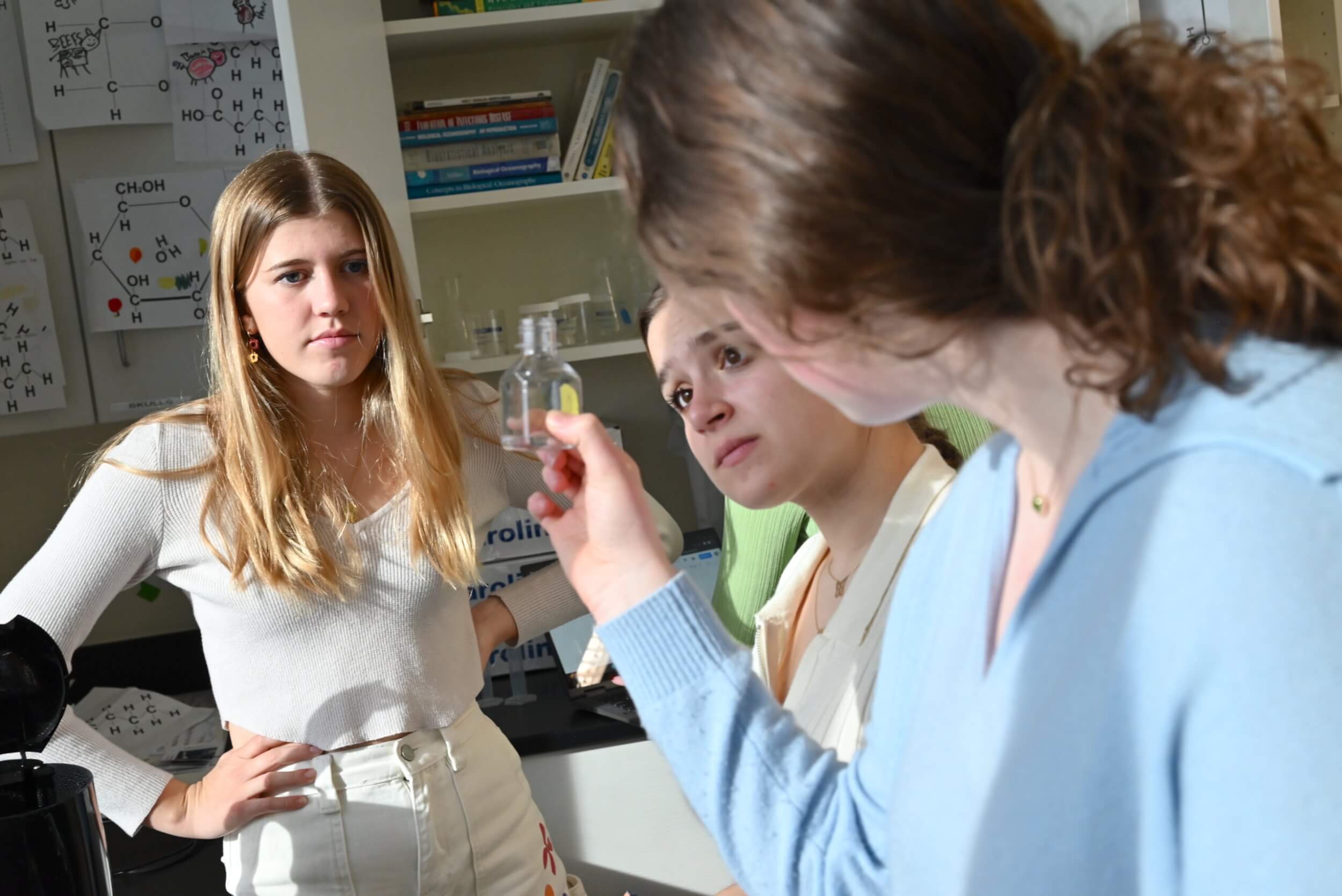What’s interesting about Climate Change, an advanced science course for Colorado Academy Eleventh and Twelfth Graders, is that it’s different every year, says Dr. Leo Procise, who shaped the Honors elective into its current form after taking it over from a former faculty member.
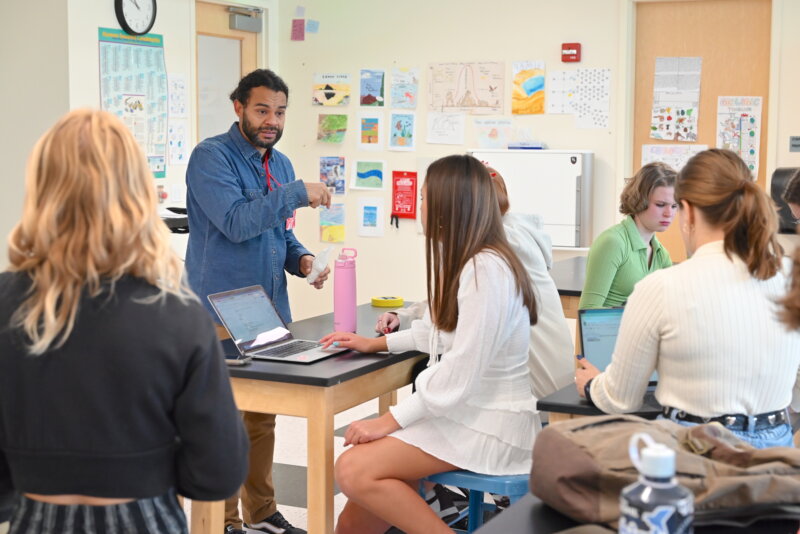
That’s no surprise. The lab-based course delves into the science behind climate change and its impacts, and every year, it seems, there’s something new to think about as the media pay increasing attention to climate issues, and scientists and others work to address one of the defining challenges of our time.
“This year, we kicked off the course by looking at the damage done in Florida by Hurricane Ian in September,” Procise explains. One of the most powerful storms to make landfall in the U.S. in decades, Ian devastated parts of Florida and the Gulf Coast. But Procise noticed that one community made the news because of the way that it survived the hurricane without losing power.
In Babcock Ranch, the first town in the U.S. to run entirely on solar energy, all 2,000 homes stayed up and running despite Category 4 winds that left a path of destruction through neighboring areas. “So, in class, we were able to look into solar power, climate resiliency, and new approaches to planning—all things last year’s students in my course couldn’t have experienced in the same way,” Procise says.
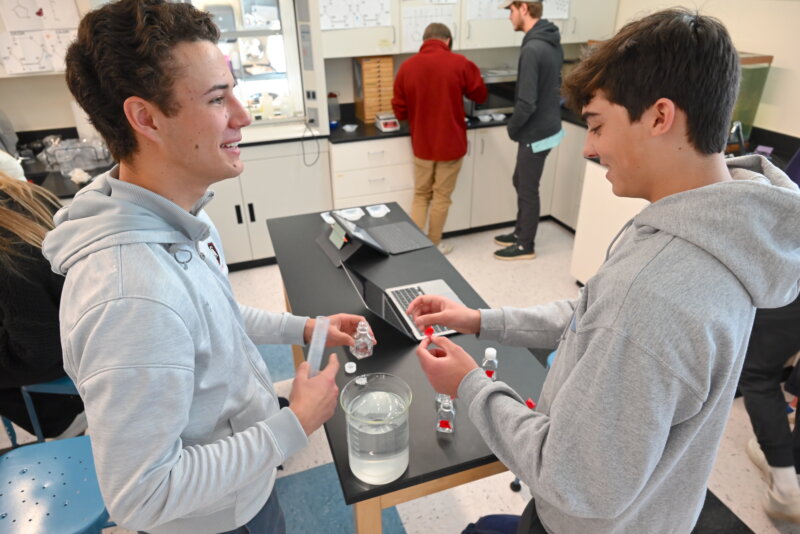
That Climate Change can incorporate breaking news and other up-to-the-minute information into the course syllabus is by design, he says. Current events create a sense of urgency around climate science, sparking new questions and keeping students engaged in ways that a traditional hard-science approach might not.
“We still cover major topics like fossil fuels, alternative energy sources, and transportation every year,” Procise recounts, “but we can come at them a different way, depending on what’s happening in real time.”
For Senior Gray Perkins, the sense of urgency is unavoidable. “What stood out for me in this class,” he says, “is the idea that unlike most other problems we face, climate change requires immediate action, or else the damage will become irreversible. It surprised me to learn that, although we have known about climate change for a while, it’s only now getting the attention it deserves.”
Sustainability in the food industry is another perennial topic that got a jolt of relevance via the latest headlines. Media coverage of plant-based meats and other products, which have rapidly gained attention and popularity, inspired a first-time experiment that saw the class running a double-blind tasting of plant- and meat-based foods.
“I know for a fact that many of my students hate mushrooms,” Procise recounts, “but in the study, almost everyone preferred plant-based ‘fungus’ nuggets over the chicken version.” And while a similar comparison between plant-based and pork sausage revealed a unanimous preference for pork, the students still were able to discover that plant-based sausage contains twice as much protein per serving.
“That’s a lab that I couldn’t really do in any other class,” says Procise. “It’s fun, but at the same time they’re getting exposure to ideas and scientific concepts that they might not encounter otherwise.”
No ‘doom and gloom’
The details may change year to year, but the overarching goal of Climate Change remains the same: to ensure that young people are aware of critical climate issues, and to demonstrate the scientific grounding behind them. That objective makes the course one of numerous initiatives at CA focused on environmental stewardship and sustainability; Procise himself is one of three faculty sustainability leaders, alongside Upper School science teacher Sydney Finkbohner and Lower School science teacher Jeff Goldstein ’88.
“My course isn’t about doom and gloom,” he explains. “We’re not just talking about how bad climate change is for the planet. What I hope to do is make my students feel excited and even hopeful about reversing some of its effects. That starts by looking at the science.”

Though they may not resemble the typical biology or chemistry experiment, labs in Climate Change are just as central to the learning that’s taking place. Procise points to a unit on ocean acidification as an example of the real science at the heart of the course.
Rising levels of carbon dioxide in the atmosphere due to human activity alter the chemistry of seawater, making its average pH more acidic and impeding the calcification that coral reefs depend on. In their main lab experiment, students expose tiny fragments of coral to different acids in varying concentrations to see how the contaminants might affect coral and other calcium carbonate-building organisms in the ocean. Groups of three scientists each devise their own tests and variables, monitoring the effects of the duration of exposure, acidity, and other factors on the coral samples.

As they analyze their lab results, students are able not only to reflect on the direct consequences of ocean acidification for coral reefs, but also to ponder its indirect impacts on the significant percentage of ocean species that depend on coral reefs for food and shelter. Discussing the resulting decline in biodiversity, students make connections to an even broader range of ideas, such as dwindling populations of certain fish species, reduced economic benefits for communities that depend on reef tourism, and a shrinking global food supply.
But the ocean acidification lab doesn’t stop there. Their data and analysis lead students to further investigations of potential solutions, such as electric and hydrogen-powered vehicles that reduce the amount of carbon dioxide humans contribute to the atmosphere.
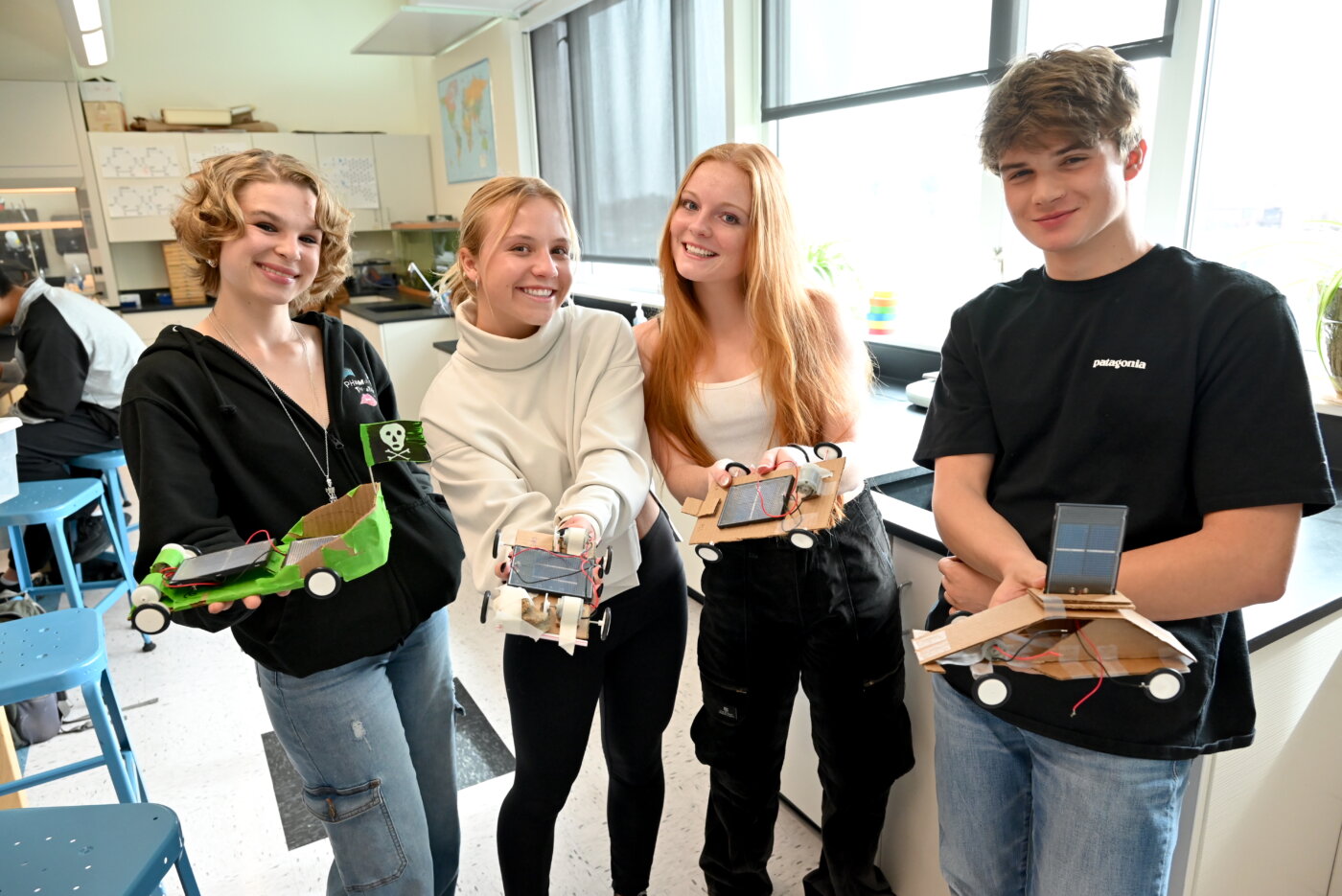
“That’s what’s so engaging about the Climate Change course,” Procise points out. “Every lab or discussion about one topic potentially ties into another, which then leads to something else.”
“Students often come to this course with a little bit of a blank slate,” he continues. “They know about some of these issues, they may even be aware of some of the science, but they haven’t yet made all of these connections. When they finish the course, they’re hungry to keep learning about the science and how it can make a difference in the future.”
Climate change hits home
Procise’s interest in the science of climate change has its origins in years of college field work and, later, in firsthand experience with some of the practices and technologies intended to address humans’ impact on the planet.
When he was an undergraduate, Procise completed four years of research among coral reefs in the Bahamas, which are among the most extensive in the world. He continued that work as a graduate student, earning his PhD in oceanography and becoming an expert on ocean carbon, sustainable fisheries, and other topics closely tied to the study of climate change.

But one experience truly brought home the impact of climate change, inspiring Procise to make the topic a focus of his career.
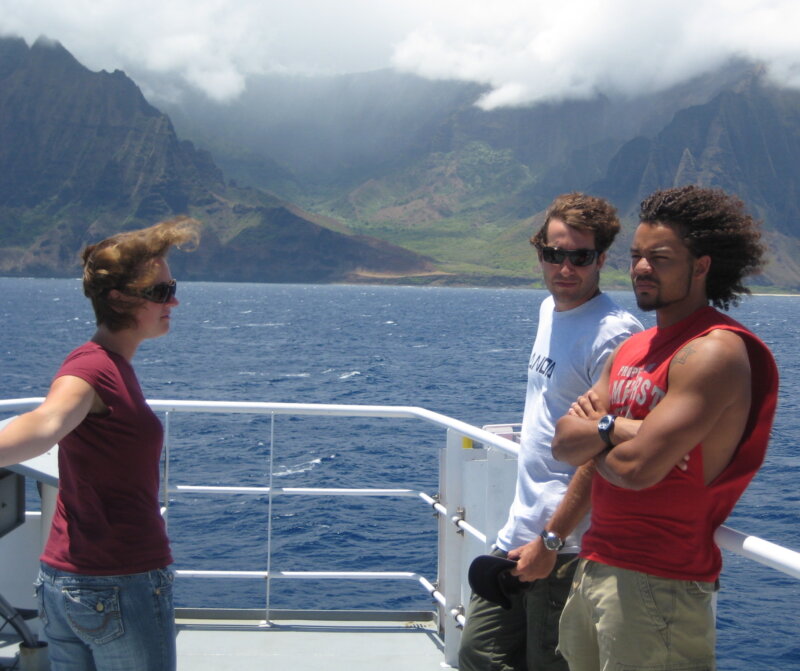
“When I first visited the Bahamian reefs in the early 2000s, they were an amazing, living playground,” he recalls. “But 10 years later, after I finished my graduate degree and was teaching high school students, I took a group to the same reefs I had researched. What we found was not what I remembered: the reefs were overrun by seaweed and algae and dying out due to bleaching.”
Procise’s commitment to teaching the science of climate change only deepened after that trip. Trying to make ends meet as a young educator just out of college, he explored ways to conserve energy and reduce waste, and when he and his wife, who works in the food industry, were married, they both agreed to live as sustainably as possible. Today, keeping their six-month-old clean inspires them to think about ways to use less water, and the family car is a Tesla, a conversation starter with students who may be excited about electric vehicles but are less familiar with their benefits.
“In the abstract,” he says, “all of my students like the idea of electric vehicles, solar power, and all that. But in my Climate Change class, we can take the time to dig deeper. I can show them the Tesla app on my phone, which illustrates how my home is making solar energy. We can talk about my family’s trip to Moab, which we did in six-and-a-half hours with bikes on the back and equipment packed in the extra compartment in the front of the car. ‘Wow’ is their typical reaction.”
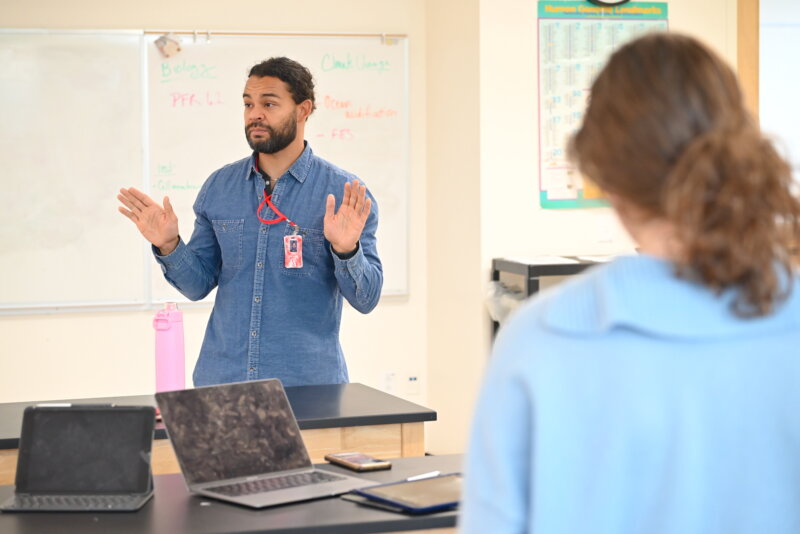
Still, Procise insists, the class isn’t about instilling a political viewpoint. “I don’t want my students knowing that I feel strongly about one thing or another. I only want them to understand the science.”
Media and personal bias is a frequent topic of discussion in Climate Change. Procise scrupulously strives to represent views on all sides of the climate change discussion, sourcing news coverage and scientific articles that come at the topic from many angles. But sometimes, as in the case of nuclear fusion power, there’s little debate.
Once confined to the pages of science fiction, nuclear fusion burst into the headlines recently when an experiment at the Lawrence Livermore National Laboratory in California for the first time achieved net energy gain with a nuclear fusion reaction. The breakthrough offered a tantalizing vision of a future of clean, limitless power.
In left- and center-leaning media sources, Procise found plenty of positive coverage of the fusion breakthrough to share with his students, but he struggled to come up with other points of view expressing skepticism about the viability or cost of fusion power. In a course dedicated to inspiring optimism about potential solutions to the climate crisis, it was a good problem to have.
As Perkins explains, “My favorite part of Climate Change is that we spend most of our time talking about how the damage can be reduced through the actions we are already taking to stop climate change. Most of the time you just hear about how bad it is and that our planet and humanity are doomed, so it’s nice to hear about how much progress we have made and how much we will be able to achieve in the near future.”
